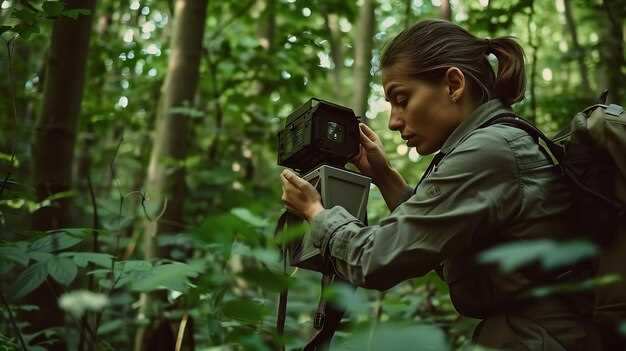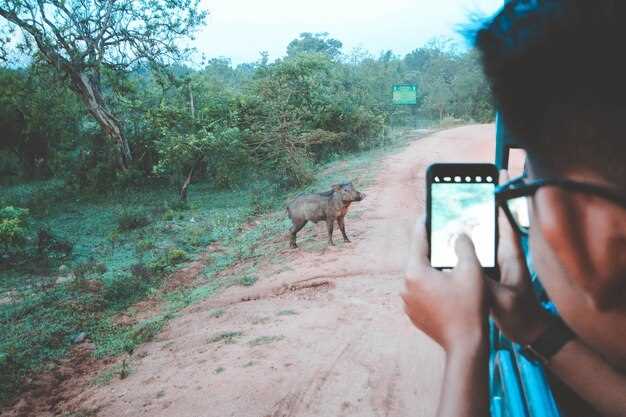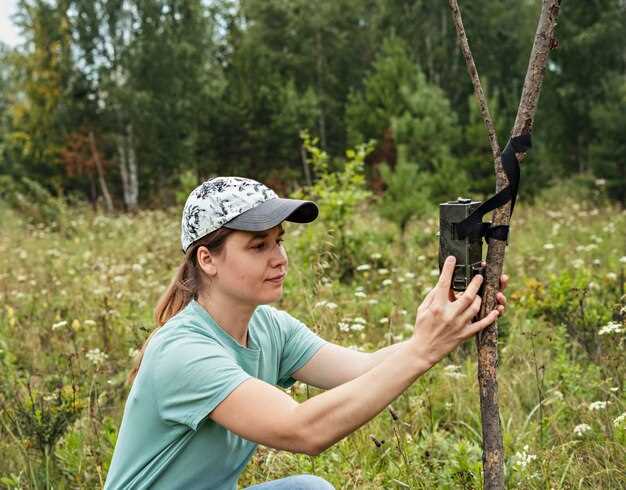
Using trail cameras to scout effectively

In the world of hunting and wildlife observation, the importance of effective scouting cannot be overstated. The ability to gather precise information about animal movements and habits can significantly enhance your chances of success. One of the most powerful tools available to modern hunters and wildlife enthusiasts is the trail camera. These devices not only capture stunning images of passing wildlife but also provide invaluable data that can inform your strategies.
The use of trail cameras allows for a deeper understanding of animal behavior, which can lead to more effective scouting. By placing these cameras along well-traveled trails, water sources, or feeding areas, you can monitor the activity in your area without the need for constant presence. This discreet observation enables you to gather insights on the best times to hunt and the most effective locations to set up.
Moreover, trail cameras can help you identify patterns in wildlife movement, such as seasonal shifts or preferred pathways. By analyzing the data collected, you can adapt your strategy to align with the animals’ behaviors, maximizing your chances of a successful outing. Emphasizing the integration of technology in your scouting approach will not only improve your efficiency but also enhance your overall experience in the field.
Choosing the Right Trail Camera for Your Scouting Needs

Selecting the appropriate trail camera is essential for optimizing your scouting strategy. Various factors should influence your decision, including image quality, detection speed, battery life, and weather resistance.
Image Quality: High-resolution images are crucial for accurate identification of wildlife. Look for cameras that offer at least 10 megapixels. Additionally, consider cameras with infrared technology for better low-light performance, ensuring clear night images.
Detection Speed: The faster a trail camera can capture movement, the more effective it will be for scouting. Aim for a model with a trigger speed of less than 0.5 seconds to avoid missing critical moments when animals pass by.
Battery Life: Long-lasting battery performance is vital for extended monitoring. Opt for trail cameras that use AA batteries or rechargeable lithium-ion batteries, and check reviews for reliability in various weather conditions.
Weather Resistance: Your trail cam will be exposed to the elements, so it should be durable and waterproof. Look for a camera with a robust casing that can withstand rain, snow, and varying temperatures, allowing it to function year-round.
Storage Capacity: A good trail camera should support large memory cards, enabling you to store more images and videos. Ensure that the camera can handle cards of at least 32GB to avoid frequent trips to check the device.
Consider your specific scouting needs when making a purchase. Whether you prioritize monitoring deer activity or observing small wildlife, there’s a wide range of trail cams available to suit your preferences. Researching specifications and reading user reviews will help you make an informed choice.
Optimal Placement of Trail Cameras for Maximum Coverage

To effectively enhance your scouting strategy, the placement of trail cameras is crucial. Proper positioning ensures that you capture a wide range of wildlife activity and gather comprehensive data about animal patterns.
First, identify key locations where animal trails converge. Look for signs such as tracks, droppings, or scrapes, which indicate frequent movement. Setting cameras along these trails increases the likelihood of capturing images of various species.
It is essential to consider the height and angle of your trail cameras. Placing cameras 24 to 36 inches off the ground is generally effective for most wildlife, as this height allows for a clear view of passing animals. Aim the camera slightly downward, ensuring it captures the target area without obstruction.
Avoid placing cameras facing directly into the sun to minimize glare and false triggers. Instead, position them to the east or west, where the rising and setting sun won’t interfere with image quality. Additionally, ensure that the cameras are angled to cover a broad field of view, optimizing the chance of detecting movement.
Regularly scout your placement spots to adjust for seasonal changes in animal behavior. Animals may shift their routes depending on food availability or weather conditions, so periodic re-evaluation of your trail camera locations is ideal for maintaining comprehensive coverage.
Lastly, consider setting up multiple cameras to cover different areas of interest. Utilizing a network of trail cameras enables you to gather extensive data across various habitats, providing a valuable understanding of the ecosystem and improving your overall scouting tactics.
Analyzing Trail Camera Data to Enhance Your Scout Strategy
Optimizing your scouting strategy involves a thorough analysis of trail camera data. By effectively interpreting the images and information collected, you can gain critical insights into wildlife patterns and behaviors. Start by reviewing the times when animals are most active, paying attention to dawn and dusk hours, which are often peak movement times.
Group your trail camera data by species to identify trends specific to each animal. Not only will this help in understanding their habits, but it will also assist in determining the best locations for future scouting trips. Look for patterns in their movements based on weather changes or seasonal shifts, as these factors can significantly impact wildlife activity.
Utilize technology to streamline the data analysis process. Many modern trail cameras offer advanced features that include time-lapse photography or video recording, which provide a more dynamic view of animal behavior. Additionally, employing software tools can help in organizing and managing large volumes of images, allowing for easier identification and trend tracking.
Monitor data over an extended period to identify consistent movements or changes that could indicate shifting patterns. Anomalies in behavior may suggest environmental changes or increased human activity in the area. Recognizing these shifts early can lead to timely adjustments in your scouting strategy.
Finally, don’t forget to integrate your findings into your overall hunting plan. Use the knowledge gained from trail cameras to select optimal scouting locations, set up bait stations, or place decoys based on where the wildlife is most frequently sighted. This targeted approach will enhance your chances of success.




